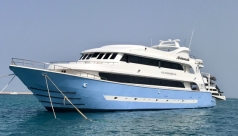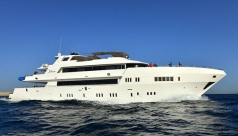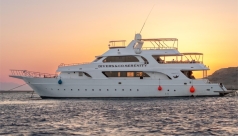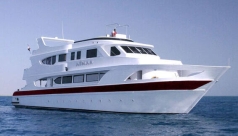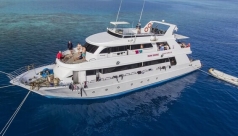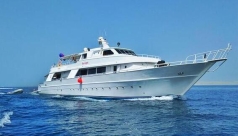The Climate, Diving Season and Best Time to Visit
The Southern Red Sea of Egypt is a little warmer than the north. Water temperatures rise to 28-30°C from July to September. In October and November the temperatures drop to 27-28°C and then from December to February to 26-23°C. After this, temperatures warm up again from 25-28°C between March and June.
Egypt experiences seasonal temperatures variations, ranging from 40°C peak heat in August to cooler 20°C winter lows (December-February), which may influence your travel timing. Summer winds can blow between May and September, with stronger winter winds from October to April. On rare occasions, dive cruises will be re-routed if winds are too strong for the original routes.
Oceanic whitetip sharks can be encountered In St John's around May and June, and at Elphinstone and the rest of southern Egypt from October to December. Thresher shark season is from September to December around the offshore islands, Brothers and Daedalus. Hammerheads can be seen at Daedalus in the summer months when big numbers of females are attracted there. Manta ray and whale shark season at St. John's, Daedalus and Brothers is around April and May.
Ports of Departure and How to Get There
Red Sea South liveaboard safaris depart from Hurghada, Safaga or Port Ghalib (at Marsa Alam). Often they will begin at one port and end at another. St. John's Reef trips are the exception, in that they use only Port Ghalib as their departure and return port. Most boats only depart port early morning on Day 2 of the cruise which means you can arrive quite late on the Day 1 and still be on time to board before it sets sail.
Most guests fly into Cairo International Airport. Over 70 international airlines from Europe, the US, Africa and Asia use the airport. Hurghada, Safaga and Marsa Alam are accessible via domestic flights or direct from a few overseas airports. More information on: How to get to Egypt.
You'll find each vessel's departure ports listed in the 'Departure Schedule & Prices' section of their respective web page. Complimentary same-day transfers from local airports or hotels are typically provided before departure. Complete boarding details will be emailed after your reservation is confirmed.
We strongly advise securing comprehensive travel insurance that specifically covers scuba diving activities and trip cancellations. Competitive quotes are available through our dedicated insurance programs section:

Places to Stay
For extended stays in Egypt before or after your Red Sea liveaboard adventure, our partner HotelsCombined.com offers a wide selection of accommodations with their guaranteed lowest prices. Their user-friendly platform allows you to browse options, get instant answers via online chat, and complete secure bookings with your credit card:

Take advantage of their Low Price Guarantee to secure the best value for your Egyptian stay.











